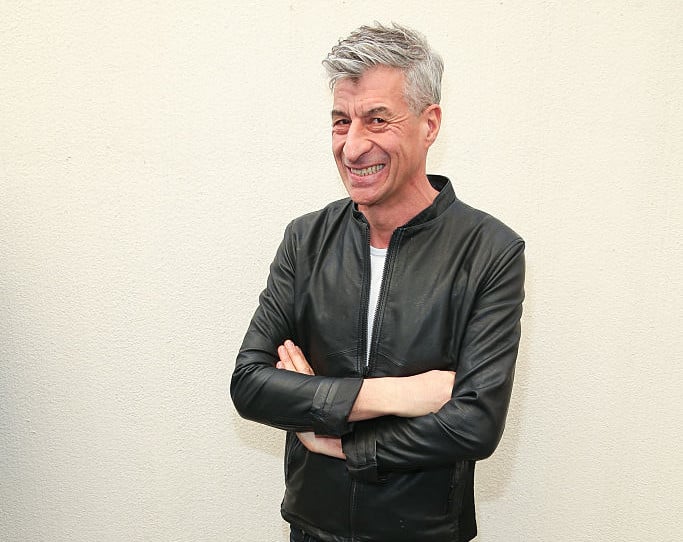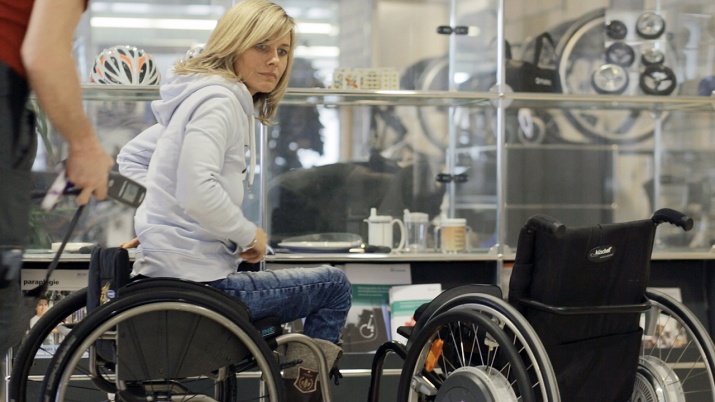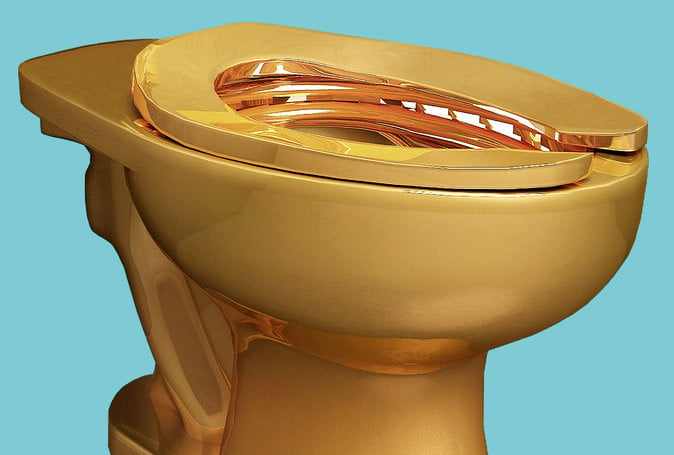Art & Exhibitions
Maurizio Cattelan Will Have Paralympics Athlete Ride Wheelchair on Water
The artist remains incorrigible.

The artist remains incorrigible.

Ewa Hess

After a hiatus, art prankster Maurizio Cattelan is back with a new work, to debut at Manifesta 11 in Zurich. Ewa Hess interviews the artist in advance of the show, “What People Do for Money,” which runs from June 11 – September 18, and the two discuss his collaboration with former Paralympics athlete Edith Wolf-Hunkeler, as well as the power of going viral, below.
Zurich welcomes you back from your self-imposed retirement as an artist! Are you back for good?
Let’s say that I pretended to be dead for a while, but, as Dante did, after the hell’s tour I’d rather come back to life…and if it’s true that you never really lived until you never nearly died, now I’m ready to start my new life!
As your Guggenheim show featuring a solid-gold toilet is postponed, Zurich will now become the first place to host a new work by you after your five-year hiatus. Why save this honor for Zurich?
Christian Jankowski [who’s curating Manifesta 11] is an old friend and I’ve been really happy to hear about his nomination. I loved his idea of creating joint ventures with local workers and I was enthusiastic when he invited me to collaborate with someone to produce a new work in Zurich.
Your work was a collaboration with the former Paralympics athlete Edith Wolf-Hunkeler, how did this collaboration come about?
We were looking for a person daring to be on water on a wheelchair, and she was perfect for this task. She took a while to think about it, understandably, and in the end she accepted. I feel lucky and honored to be hosted by her, I admire the way she approaches extreme challenges, I believe it’s part of her sportive soul.
A wheelchair rolling on water—what a powerful image! Is it relating to human kind’s presumed omnipotence or perhaps to Jesus’s frailty?
None of the two, actually, it’s more about hope, instead. Human progress has always moved forward through inspirational images coming from the arts. In 1865 Jules Verne’s From the Earth to the Moon was a science fiction novel, a hundred years later it was a fact: as human beings we continuously raise the bar of our goals, and expand our frontiers.
It is an image that speaks of the limits and the possibility to overcome them: in a couple of years we could also conquer water in a wheelchair.

Maurizio Cattelan and Edith Wolf Hunkeler, former Paralympic athlete and world champion. Courtesy ©Manifesta 11.
Did the fact that Zurich is a Protestant city have any impact on your idea?
Zurich itself has been inspiring, it has always been a free port for thought! Think of [Richard] Wagner or [James] Joyce, Dadaism and the Cabaret Voltaire…it’s a great place to get a second chance!
Did you consider placing yourself in this wheelchair or putting one of your twin-figures, like Charlie, in it instead of a Paralympic athlete?
A wheelchair is one of those objects that you wish to never encounter on your path, but at the same time it’s there to remind us how fragile our bones, our muscles, and our brain are. It’s something that I dealt with for a while, firstly in Lourdes, then in the ambulances, and I wouldn’t wish those on anyone.
Can you reveal anything about the technical feasibility of this daring project?
There’s a technical team working on it night and day, and I must confess it’s no picnic, but I wouldn’t know how to explain the functioning… I only know it’s something about Archimedes’s [principle].
Will the work be carried out in front of a live audience or is it going to happen without any one knowing and recorded?
We’re not looking for entertaining an audience: the focus is creating an inspiring image. If the safety of the persons involved will not be at risk we’ll stream it live, otherwise not. It’s not essential to the realization of the work.
Manifesta 11’s theme is “What People Do for Money.” It involves the suggestion that everyone has their price, but also that paid work is something that keeps us going in a constructive way. What’s your relationship to labor?
My relationship with the working world has been quite troubled, at least until I discovered that the problem wasn’t the kind of job, but the idea of depending on others while doing what you don’t like. From my point of view, the title would be “what people sometimes do to forget what they’d like to do for themselves.”
In some of your works you approach capitalism quite angrily, and how it recuperates values and ideas—you sold your exhibition space in Venice and place a sculpture of a middle finger in front of Milano’s stock exchange, for example. Are you a political person?
It is said that the problem is not to make political works, but to make works politically. I don’t believe that in order to be politically committed an artist must act as a member of a party or, worse, speak exclusively of contemporary social problems. Artists should be as politically engaged as any other citizen, at most, they can use their reputation to support a given cause, but I prefer to close my mouth and spread powerful images instead.
One could think Donald Trump is a figure invented by an ironic artist. It wasn’t you, by any chance?
In Italy we already went through all this with Berlusconi, but this case is of course much more dangerous. He looks and sounds more as the invention of a sadistic screenwriter, the main character of a b-series. Trump is the answer to our perpetual and increasing need for entertainment…I really hope to hear soon more and more people yelling “I’M AS MAD AS HELL, AND I’M NOT GOING TO TAKE THIS ANYMORE!” That film is forty years old and has never been so relevant.
What’s your best guess at future scenarios for the world we live in, Orwellian dystopias or rather a grassroots resurrection?
We are at a crossroads, nations on one side, corporations on the other, and since we’re all connected, which law is the one that rules the world we’re living in? It’s like living in the Far West, we are at the beginning of a new era, where everything is legit, even NSA controlling everyone at every time. So its far more subtle than Orwell’s society, as we believe that we are free and that we decide independently, while every choice we make is registered and sometimes steered: data today value much more than gold.

Maurizio Cattelan and Pierpaolo Ferrari. Courtesy of ©TOILETPAPER.
The planned work for Guggenheim is a solid golden toilet and you call your publication—which you publish together with Pierpaolo Ferrari—TOILETPAPER…
…and the show in Torino was called “Shit and Die” after Bruce Nauman…The fact is that we are what remains from our eating process. Speaking of toilets is more about our inner selves than you can state at first glance.
Does the golden throne pay homage to Piero Manzoni’s Merda d’artista, and his a commentary on the absurdities of the art market?
I always saw his work as ecumenical, more than a specific commentary on the art market. As during the Catholic mass the priest gives away to the worshippers the Body of Christ, Manzoni gave away several parts of his body, his breath, his fingerprints, and also his shit; they’re almost relics. America, on the other side, offers the possibility of being “face to face” with the newest objects of worship, works of art, inside their sacred spot, the museum. It’s more about having a spiritual moment of pure, lonely contemplation in the less obvious area of an institution. That’s something that doesn’t happen so often anymore.
Your works are often seen as provocations, but slowly unfold as complex and meaningful. Does this complexity just happen?
It nice to hear this, thank you. I try to leave nothing to chance and do things at their very best, nothing just happens. It’s not so far from making a newspaper: you collect the information, you fact check it, you go deeper and deeper, until you get to your personal opinion on that event and try to formalize it. A simple provocation is forgotten in two days, a good work would last much longer.
How do you see the relationship between art and design?
It almost seems like an incestuous relationship today!

Maurizio Cattelan, America (2016). Courtesy of the artist.
You call yourself an “image philiac,” because you love to see a lot of images. Does this condition go hand in hand with being an iconoclast?
Raise your hand if you’re not image philiac yourself…We all are! What interests me is the images’ inner power to stick in your mind permanently. This impact is inextricably linked to influence—the more impact you could create, the more influence you have. I’m fascinated by the ability to make things go viral, it feels like the closest that we could get to having a human superpower.
Are you still member of the church?
Let’s say I do believe in religion: human beings are religious animals, and such a characteristic feature of human behavior cannot be ignored or dismissed.
Manifesta 11 “What people do for money” takes place in Zurich, Switzerland from June 11 – September 18.